Meet Ruth Sophia Padel
First published in Sanctuary Asia,
Vol. 43
No. 8,
August 2023
The great-great-grandchild of Charles Darwin, Ruth Padel is a celebrated British writer, poet, singer, viola player, academician and conservationist. Wadham College in Oxford University changed its Statutes (which until then only admitted male Fellows), to accommodate her! A path-breaker in every sense, she came to India to experience tropical forests… and ended up travelling through 11 Asian nations to discover whether and how wild tigers could possibly be brought back from the edge of extinction. She is the only writer to be a Fellow of both the U.K. Royal Society of Literature and Zoological Society of London, has served as a Trustee and Board Member of the Zoological Society of London, and as Chair of the U.K.’s National Poetry Society. She is a Trustee of the U.K. charity New Networks for Nature, which brings together zoologists, conservationists and artists, and was Professor of Poetry at King’s College London. She speaks to Bittu Sahgal about her life, passions, and determination to be a persuasive voice for the biosphere.
I felt compelled to read your book Tigers in Red Weather, twice! What makes Ruth Padel tick?
That’s lovely! I guess curiosity, a longing to go out into the world and discover for myself about new places, people and animals. A love for nature – like climbing a mountain full of hummingbirds in the Cocora Valley in Colombia, but also for singing, for poetry, and for learning from other people and their different ways of thinking. Their different music, if you like: their different dance. Also, a love of history. I love imagining past lives, especially past creators – composers, painters, scientists. I have written two tiny biographies-inpoems. One of my great-great-grandfather, Charles Darwin, and one of Beethoven, the archetypal creator. My most recent novel, Daughters of the Labyrinth, is rooted in history. It is set on the Greek island of Crete, where Europe began, in the Bronze Age. It centres on the Jews of Crete; I am not Jewish but I have lived on and off on Crete since 1970. It is based on a true but little-known story about what happened to the Jews in the Holocaust during the German occupation. But it also looks back to the myths of the Minotaur and the ancient Minoan palaces. I think one powerful impulse in me is to see the past in the present, the present in the past. To discover, or maybe to make, new connections. I love putting things, and people, together.
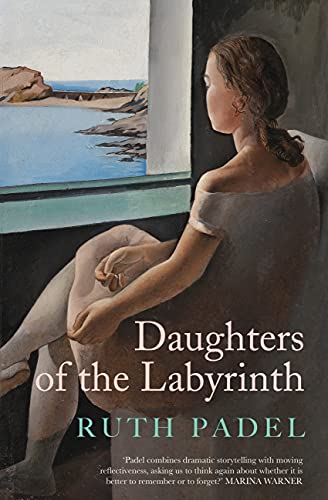
Ruth Padel’s most recent novel, Daughters of the Labyrinth is rooted in history, and set on the Greek island of Crete.
Does the weight of your illustrious lineage – Darwins, Keynes, Padels, Barlows – ever weigh you down?
I am only related to Keynes by marriage! My beloved grandmother Nora Barlow, Darwin’s grand-daughter and first editor, had a big influence on me. In her home, as in Charles Darwin’s, the garden was a natural extension of the house, and I loved staying with her, looking at plants and wild animals, mainly birds, though occasionally a muntjac would stray in. They are a pest in many parts of south England, though to me as a child it was very exciting. She was born Nora Darwin and was first cousin to Margaret Darwin, who married Geoffrey Keynes. They were both grand-daughters of Charles Darwin: there is no Keynes in my blood; the Keyneses of my generation are my second cousins. Maybe if I had been a scientist, the scientific heritage might have weighed me down. But I did Classics – Greek and Latin, following my father, who taught me ancient Greek. Then I wrote a Ph.D., at Oxford, on Greek tragedies, and what the ancient Greeks thought was inside them – emotionally, demonically, physically. And poetry was always drawing me in, enchanting me, so I did not really notice my scientific heritage until tigers came on the scene. Then, I realised how much I needed it!
When I wrote Tigers in Red Weather, I had to learn zoology, ecology, conservation – you could probably teach a conservation course out of the index of that book – it has the fervour of the autodidact! Then, doing poems on Darwin’s life, I had to follow the journey of his thinking closely. I feel at home around zoologists. When I was a Trustee at the Zoological Society of London, I curated a series of ‘Writers Talks’ around endangered animals. I’d invite a well-known author to talk about an animal that fascinated them, as well as that animal’s keeper, and a conservation zoologist to talk about its wildlife. So, the audience could watch, for example, a Galapagos tortoise, hear Mark Haddon, author of The Dog that Barked in the Night, talking about what he felt about it, then hear the keeper talk about looking after it, then a zoologist talk about its conservation in the wild. It was a way of connecting imagination, from the writer, with the zoology, individual animal on the ground, and the ecology – with its habitat; and how it is under threat. We had a lovely occasion with Susie Orbach, the psychoanalyst who wrote Fat is a Feminist Issue, with Sumatran tigers. I said, “write about the jungle of the clinical session,” and she talked beautifully about that, but the male tiger interrupted things by roaring, so eventually Susie said to the audience, ‘Turn your chairs round to watch him, not me!’ Our first event was with the slow loris in the ‘Moonlight World’, where a tree anteater is allowed to roam loose. He investigated my handbag while I was preparing my notes to chair the event.
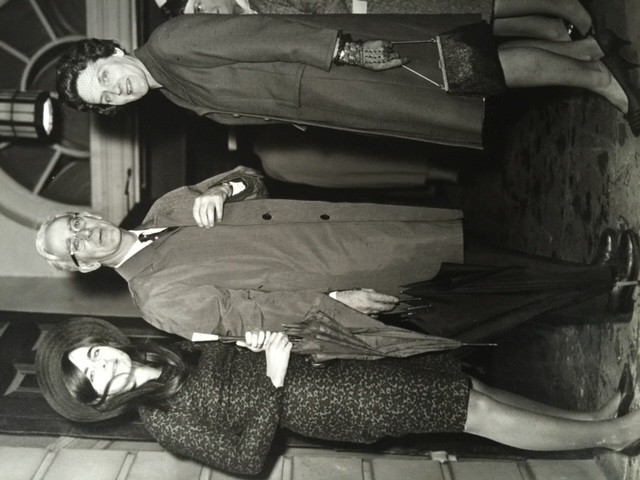
Ruth and her parents in the 1960s. Photo courtesy: Ruth Padel.
You are a hugely successful writer today, but what was your greatest challenge when starting out?
It is still a challenge actually: joining the two paths in myself. The academic, scholarly, getting-the-facts-right side of me, which of course you need, to be a naturalist. And the other, the imaginative and creative, the dreamer, the ‘what if ’ side! They are different voices. You need to find the voice of each book, and poem, that you write. At least I do. In non-fiction, the tiger book was a quest structure and that voice came easily. I wanted to find out what was happening to the tiger across Asia in all its habitats, from Siberian forests to mangrove islands of Bangladesh, snowy wastes of northeast China, mountain ridges of Bhutan and Laos, the volcanoes of Sumatra, and of course everywhere I could go in India.
That was also a process-of-learning book. The voice was the voice of someone learning conservation as she goes. For the elephant book, the voice has been much harder to find. There were working elephants to consider as well as wild ones; the role of the elephant in human imagination is far more complex; the whole relationship to human beings is suitably enormous! And although my heart is in Asia, I had to consider African elephants as well as Asian ones.
And COVID19 messed up my plans! I was hoping to go out on poaching patrols in Myanmar, where they are now poached for their skin as well as ivory – and investigate rewilding in Laos. So, at first, writing in lockdown, I felt very constrained. A lot of knowledge I really needed was available. There is wonderful video material, and lots of important scientific papers, but my instinct is always to start from the field, from being there – as I did with the tiger. It was extremely frustrating! But then we were all frustrated in lockdown. All the same, the structure, as well as the voice, of the book took longer to find. Eventually, I structured it by starting from elephants in the wild (beginning in Borneo), then moving to their biology and cognition (starting with the trunk); then to elephants in human hands (starting from the relation with the mahout; I spent a lot of time in Thailand with mahouts there), and finishing with elephants in human hearts and imagination. This section begins with religion, at first in northeast Thailand, but of course Ganesha has a starring role. Then I move to what happened to elephants in western countries where they did not live wild: what people did with them, but also thought and felt about them.
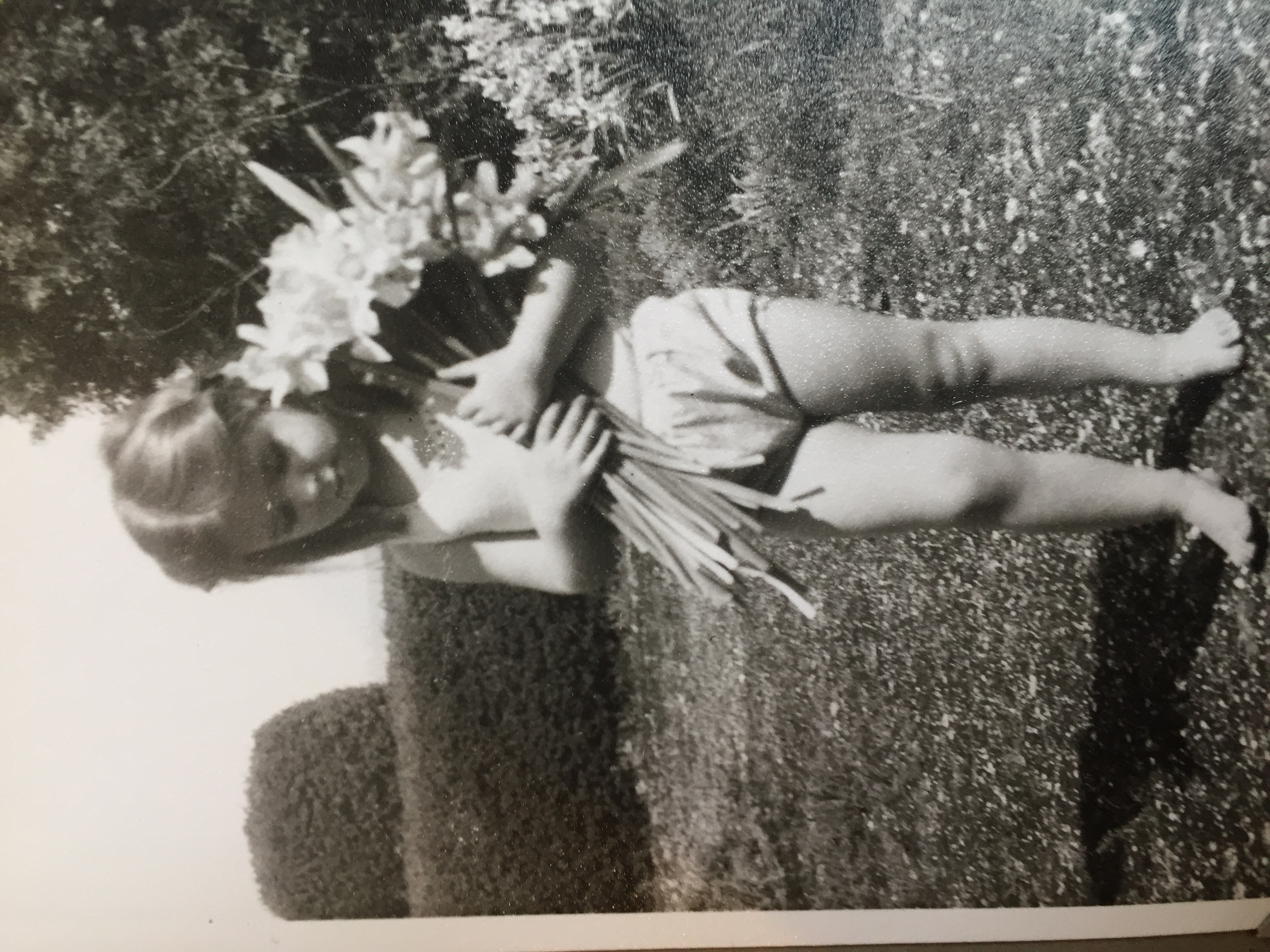
Three year old Ruth Padel in her grandmother Nora Barlow’s garden. Ruth recalls wonderful times spent staying with her, and looking at plants and wild animals in the garden. Photo courtesy: Ruth Padel.
In what order would you place your passions… poetry/writing, music/ singing and nature conservation, if you were forced to place them on a podium?
I can’t rank them! I put them all equal. Poetry and music belong together, and nature with them. The first time I went properly guided into a tiger forest was in Panna. The teak leaves were large, crackly and dry and I felt, ‘I am at home’! It was a very odd feeling. It was a moment where every one of my senses was on full alert: I was hoping to see, to learn about and understand, the tiger – in its home! It was also like being inside a great poem or novel, a place where I knew what the meaning would be, if I could see it. The ‘meaning’ of the forest was the tiger. I probably would not see it, but I knew that every single thing there, from a Serpent Eagle to the otter eating a fish, which was the first thing I saw, was connected to it. Magical. Actually, I blame Kipling for this. I so loved The Jungle Book as a child that I knew it practically by heart. The poems as well as the stories. I don’t know the Disney film, I don’t want to see it – the book is so mesmerisingly written. The black panther, with his ‘skin like watered silk and voice like wild honey dripping from the bough’, had me in thrall. I wanted to be Bagheera! Or if not be him, to marry him. I still have never seen a melanistic leopard in the wild, I would love to. I came very close to it in Bhutan.
May I reproduce here one of the very moving poems you have written and ask what you feel today about the fate of Panthera tigris?
Thank you. We all know how hard it is to struggle, one issue at a time, with the many destructive forces threatening Panthera tigris – people and corporations who enrich themselves at the expense of the tiger’s home. But after researching my new book, Elephant And Rainbow, which should come out next year, I realise how even more difficult it is to protect elephants. Because they are nomadic, they migrate, whereas tigers want to stay in a territory if they can. And how can we protect either against climate change? But we have to believe in the forces of good.
Tiger Drinking at Forest Pool
by Ruth Padel
Water, moonlight, danger, dream.
Bronze urn, angled on a tree root: one
Slash of light, then gone. A red moon
Seen through clouds, or almost seen.
Treasure found but lost, flirting between
The worlds of lost and found. An unjust law
Repealed, a wish come true, a lifelong
Sadness healed. Haven, in the mind,
To anyone hurt by littleness. A prayer
For the moment, saved; treachery forgiven.
Flame of the crackle-glaze tangle, amber
Reflected in grey milk-jade. An old song
Remembered, long debt paid.
A painting on silk, which may fade.
Is it true you might have liked to be an Opera Director in another life?
I’d have loved to do that! I can’t live without making some sort of music. I have always sung, and also played the viola in family music-making. During lockdown I much enjoyed doing a series of talks on Beethoven’s life, with his music, for Bengaluru’s wonderful Concert Hall, collaborating with a pianist, illustrating moments in Beethoven’s passionate and often very tragic life, with music he wrote. They did it beautifully, with all the difficulties of the new technology we had to work with in global lockdown.
But opera combines music, and words, and also theatre, another of my great loves. When Girish Karnad was Director at the Nehru Centre, in London, I often went to plays with him, he gave me copies of his own plays, and when I went off for tiger research in India, he gave me introductions to theatre directors too, especially in the South, in Koodiyattam. So there is a drama strand in Tigers in Red Weather, thanks to him. I sometimes think opera is rather like Koodiyattam. The beautifully costumed gestures may come over as old-fashioned and stylised, but inside the drama and the stylisation, are acute psychological truths, which every new generation can bring out newly. During lockdown, I did raga lessons on zoom with my brother, who studied Dhrupad in Benares, and played western music with my daughter on violin and viola. Now I sing in small chamber choirs, which I also love. For a while, I was Writer in Residence at Covent Garden Opera House and found the rehearsals completely fascinating – how you can bring out emotional details by tiny gestures, which are also an echo of the music. Girish was brought up on the rich rhythmic sophistication of Carnatic music, which I know I will never be able to fathom. Girish said it took him some time to become accustomed to the rhythmic thinness of western music. He found it at first almost laughable – until he realised that the subtleties of that music lay in harmony, rather than rhythm.
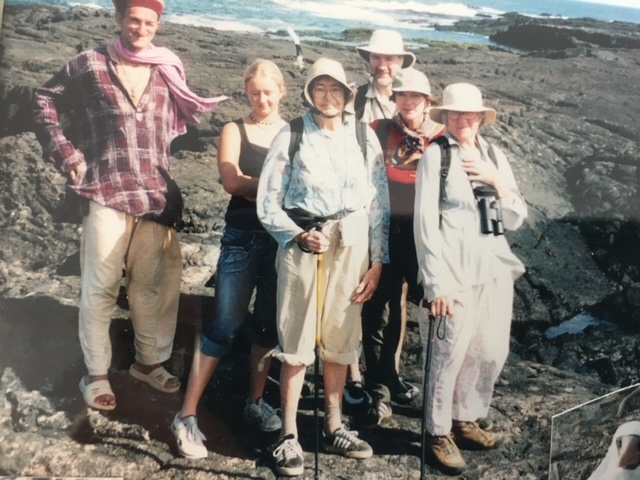
Ruth Padel’s family in the Galapagos Islands in 2004 – Ruth (second right) with her mother, Hilda, and her mother’s first cousin Sophie (both are Darwin’s great grand- daughters), two of her brothers, and her daughter. Photo courtesy: Ruth Padel.
Which section of Charles Darwin’s Beagle Voyage would you most have liked to accompany him?
The jungles of Brazil. He took such delight in those jungles! There’s a lovely story, recounted many years later by his young friend and disciple George Romanes, who was an evolutionary biologist himself. His work laid the foundation of what he called ‘comparative psychology’, and suggested that processes of thought and understanding were similar in humans and other animals. He was staying overnight with the Darwins. In the evening, they talked about when and where they had felt that feeling it was then fashionable to call ‘the sublime’. Romanes said Darwin told him that the occasion when he was most affected by the emotions of the sublime was when he stood upon one of the summits of the Cordillera, and surveyed the magnificent prospect all around. It seemed, as he quaintly observed, ‘as if his nerves had become fiddle-strings, and had all taken to rapidly vibrating’. They talked about other things and went to bed. But many hours later, about 1 o’clock in the morning, Romanes was woken up. The door gently opened and Darwin appeared, in his slippers and dressing-gown and said, “I have been thinking over our conversation. It has occurred to me that I was wrong in telling you I felt most of the sublime on top of the Cordillera. I am quite sure I felt it even more in the forests of Brazil. I thought it best to come and tell you this, in case I should be putting you wrong. I am sure now that I felt most sublime in the forests.”
So, characteristic of Darwin, that he should worry that he had misled his friend, he had made a mistake – and had to put it right, even at one in the morning!
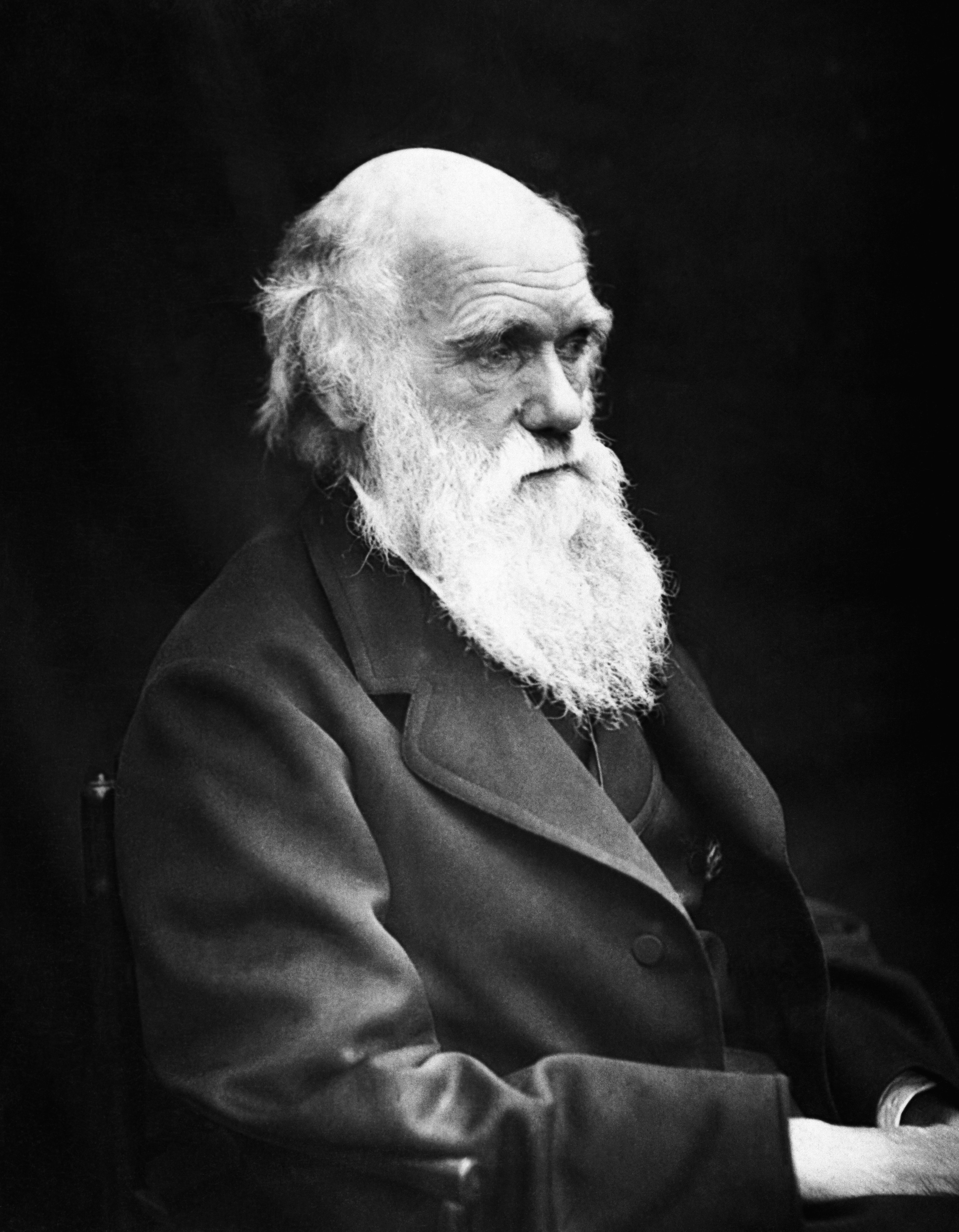
A portrait of Charles Darwin, Ruth Padel’s great-great grandfather. Not surprisingly, natural history has been part of her family background and her love of poetry is intertwined with her passion for nature. Photo: Public domain/Wikipedia.
Of Darwin’s first experience in a South American jungle you wrote:
“Vegetation he’s never seen, and every step a new surprise. New insects, fluttering about still newer flowers. It has been for me a glorious day, like giving to a blind man eyes.”
How, in your view, might Darwin have responded to the voluntary blindness that enables the extirpation of the biodiversity that opened his eyes during his Voyage on the Beagle?
He could not have foreseen it! He was an optimist. He lived in a time of optimism, and was so in love with ‘progress’ – which then seems so straightforward. When chloroform became available, for women in childbirth, he administered this to his wife himself, for their, I think, seventh child (she bore 10) – and did it so enthusiastically that she remembered nothing about the whole thing! He did not foresee that ‘progress’ would come at such cost to the earth. He would have been horrified. But he knew very well the sadness of loss in his own life. In the section of On the Origin of Species, which most shows the effect upon him of his beloved daughter’s death, aged 10, he says, “Nature is not benign.” Some people think that the Origin has the shape of Milton’s epic poem Paradise Lost, which Darwin took with him to read on his five-year voyage around South America. Because the Origin, the whole theory of evolution, after all, depends on loss: on the death of previous life forms, like dinosaurs.
What message, in verse, might you wish to leave in a time capsule, addressed to children born in 2050?
Maybe Emily Dickinson:
“Hope” is the thing with feathers –
That perches in the soul,
And sings the tune without the words
And never stops – at all.
Because we have to have hope! One of the epigraphs of my elephant book is from the Irish poet Seamus Heaney: ‘Hope is not optimism, which just expects things to turn out well, but something rooted in the conviction that there is good worth working for.’ I think all readers of Sanctuary will have that conviction. The other epigraph is from the poet Somadeva Bhatta: May Ganesha protect you, as night comes on and he dances his dizzying dance raising his trunk spraying food and light to the stars. To contact Ruth Padel, please email her agent Robert Kirby: RKirby@unitedagents.co.uk.

.png)



